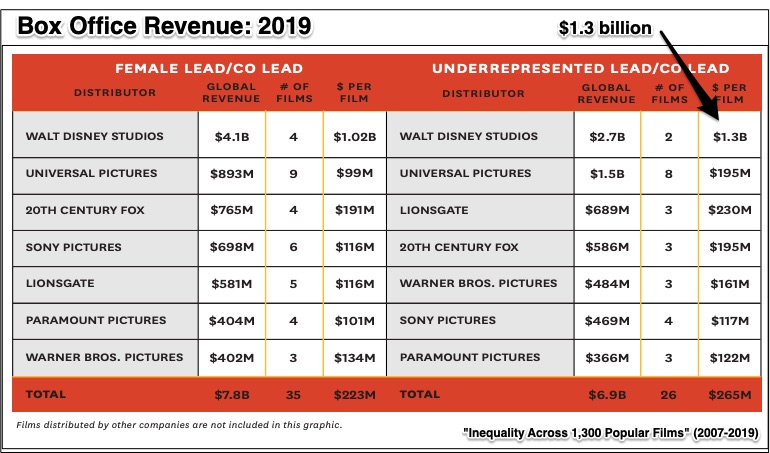
Why a Fish is Like a Pig
June 16, 2020
How Covid-19 Affects the Cost of Living
June 18, 2020The Rise of SkyWalker has been called the most diverse Star Wars:
.
Diversity in Movies
At USC, the Annenberg School’s “Inclusion Initiative” keeps us up-to-date on diversity in movies. Through a lens that sees gender, race/ethnicity, LGBTQ, and disability, they look at the stars, supporting actors, directors, and critics for top films.
1. Leading and Co-Leading Roles
All
Below you can see that (rather small) numbers for UR (underrepresented) leads and co-leads have trended upward. From 2018 to 2019, they rose by four. Meanwhile, between 2007 and 2019, 17 percent of the top 1300 films had stars that reflected diversity:
Women
We can ask how many female actors came from underrepresented racial and ethnic groups. Again, the totals are small. Among the 43 women who had leading or co-leading roles in the top 100 films in 2019, 16 were from underrepresented racial and ethnic groups. In 2018, there were 11:
2. Film Distributors
We can also compare distributors’ global revenue to the amounts generated by UR leads and co-leads. Do note that while we are talking about just two films with underrepresented racial/ethnic leads/co-leads, Disney’s revenue was massive:
3. Film Directors
Comparing the critical reviews of films, the best reviews were for UR female directors:
However, the number of UR female directors has been egregiously minimal:
4. LGBT characters
The numbers get even smaller when we look at UR LGBT characters:
Our Bottom Line: Expectations Bias
Citing her concern, a behavioral economist would go straight to our expectations bias. Stated very simply, an expectations bias connects what we are used to seeing with what we think we will see. It can shape how we act and what we accept as normal. If you return above to the second table under Film Directors, you see that there is a vast gap between estimates for the UR population and their film presence.
Through their leads and co-leads, the movies are creating an inaccurate expectations bias that ripples far beyond a screen.
My sources and more: My go-to for women in the movies, Annenberg’s Stacy Smith and her co-researchers had this 2020 research brief and this one from 2019. In addition, they looked at the LGBTQ movie numbers and directors.
![econlifelogotrademarkedwebsitelogo[1]](/wp-content/uploads/2024/05/econlifelogotrademarkedwebsitelogo1.png#100878)









